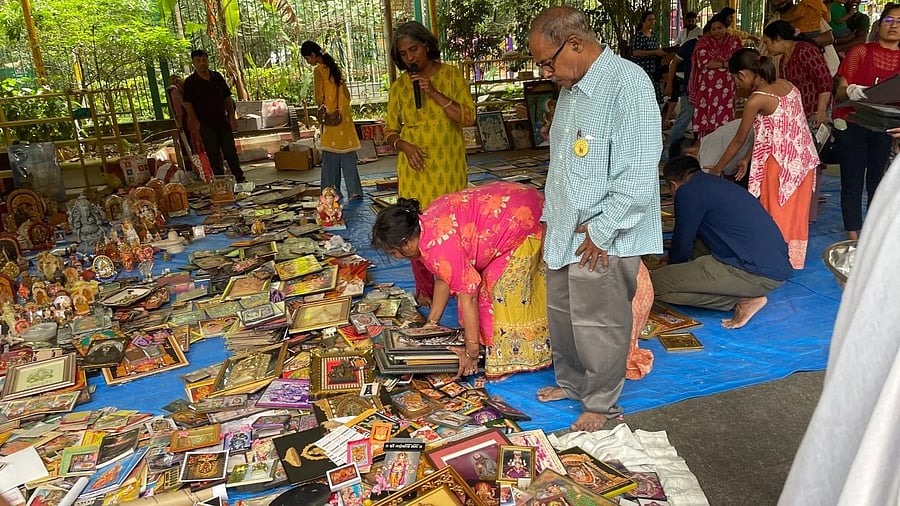
Credit: DH Photo
As Bengaluru continues to grapple with severe garbage problems, certain categories of dry waste are adding to the woes of solid waste management organisations. Articles like mementoes, trophies and awards — made of mixed materials — are hard to recycle or reuse. Often, they end up in landfills, solid waste management experts say.
When HSR Citizen Forum held a collection drive for religious idols and framed religious prints, they were flooded with mementoes and trophies that people had no use for anymore. The ‘Udvasana’ was held in March and July, designed to give unused religious prints and idols a respectful farewell with a puja.
“I think we received at least 50 trophies and mementoes,” says Srilakshmi, a volunteer. Some of them were very large, she adds.
A majority of them were made from mixed materials — wood, plastic, glass and copper. “This makes it very challenging to segregate,” she shares. To segregate them, they had to invest in equipment to dismantle and separate the components based on the material. It took about two weeks for the team to complete the process. “It is a labour-intensive process,” she notes.
Some of the trophies that were collected were treated with Pitambari powder and donated to government schools.
Saahas Zero Waste, a solid waste management company, receives a considerable amount of such ‘episodic waste’ from educational institutions and resident welfare associations. Though it only makes up less than 5% of the waste they receive per month, it is challenging to deal with, says Shobha Raghavan, CEO. “We store them in our facility for months, and finally segregate them based on the base material — wood, plastic, glass, metal etc,” she explains.
In the absence of equipment to dismantle them, the non-recyclable waste is sent to co-processing units. These units are typically located in cement factories. “The government has mandated that cement factories use at least 5% of municipal solid waste to generate energy,” Shobha points out.
Additionally, this waste should have a calorific value of 3,000 to 5,000 kcal/kg. “If the waste does not meet this requirement, the units do not accept it,” she shares. These non-recyclable items also comprise articles such as contaminated clothes, contaminated plastic and zippers.
Hasiru Dala, which works to empower waste pickers, receives less than 500 kg of unrecyclable waste a month. It is collected by their waste picker network from 37 wards and sorted in their solid waste management centres located at these wards.
Non-recyclable dry waste forms about 60% of the waste collected, and of that, wooden mementoes and photo frames form about 5%. Typically, photo frames are made of wood or thermocol. Some of them are sent to the second-hand market. Dismantled objects are collected by vendors and some are sent to waste-to-energy plants, says Chinniah, manager of the Hasiru Dala dry waste collection centre.
Srilakshmi points out that often such waste ends up in landfills. “They do not disintegrate, so people need to be more mindful of buying them,” she states. Instead, she advises, giving out plants, sweets or fruits as gifts.